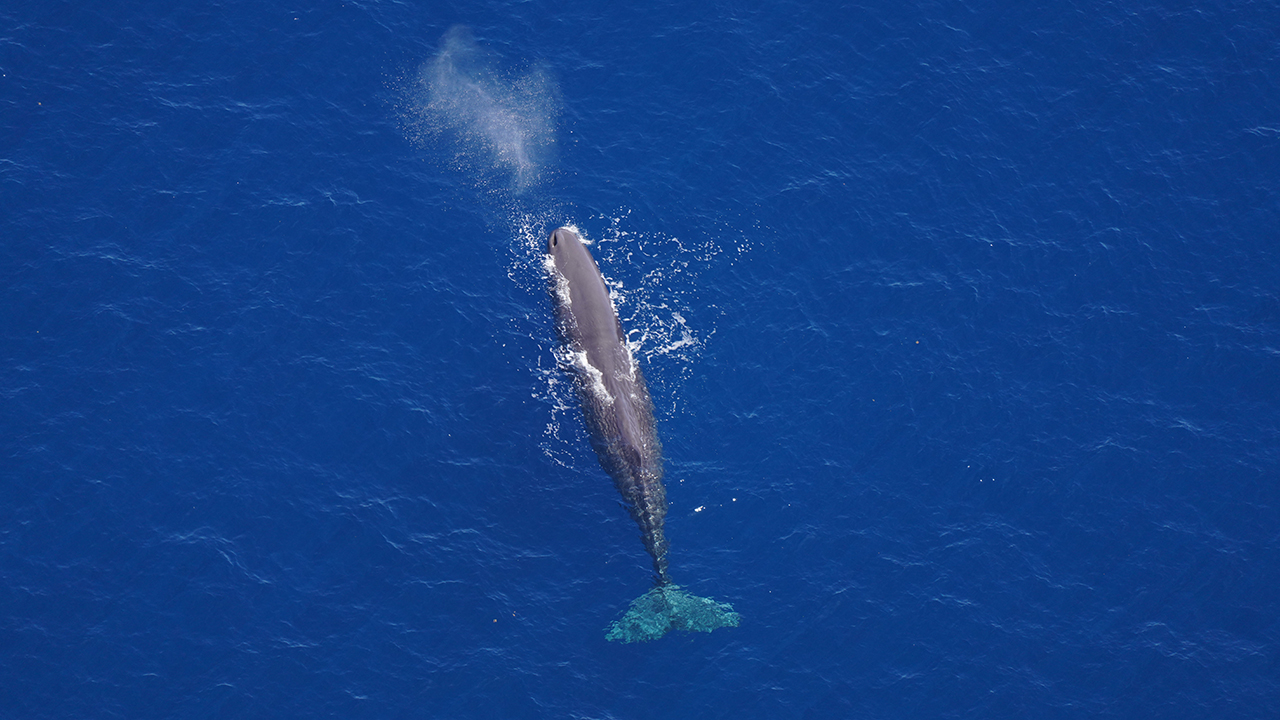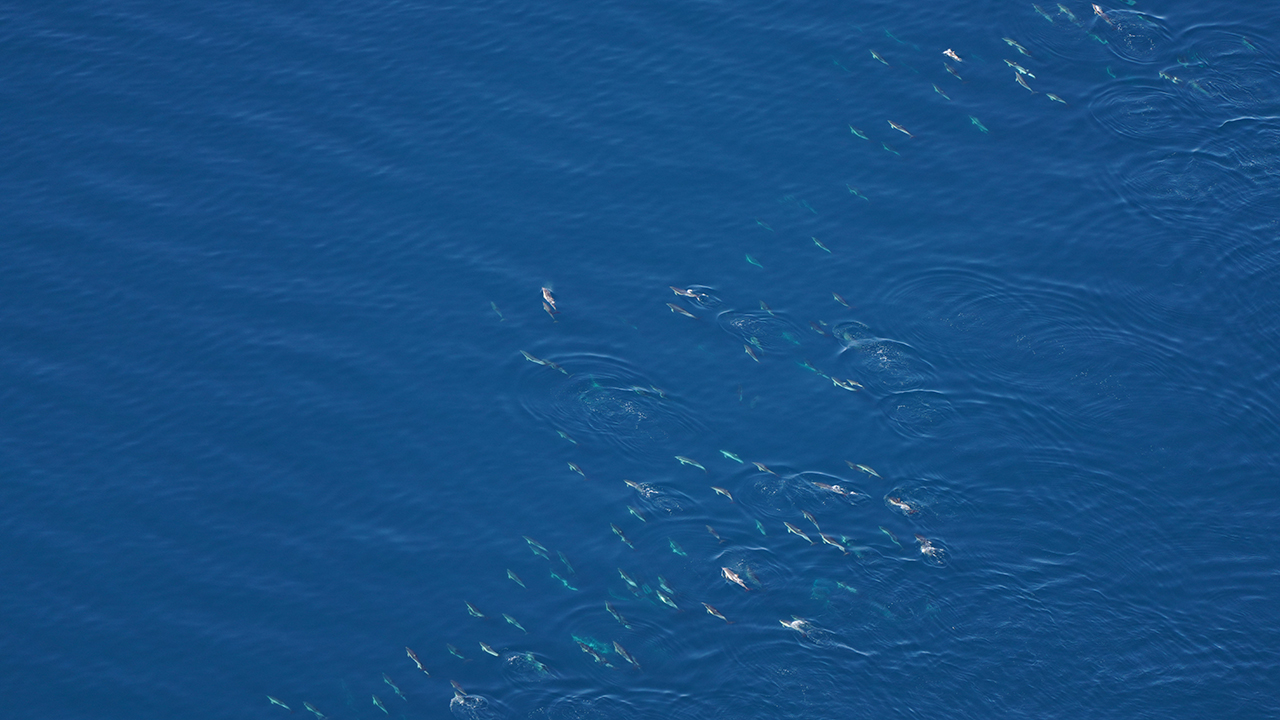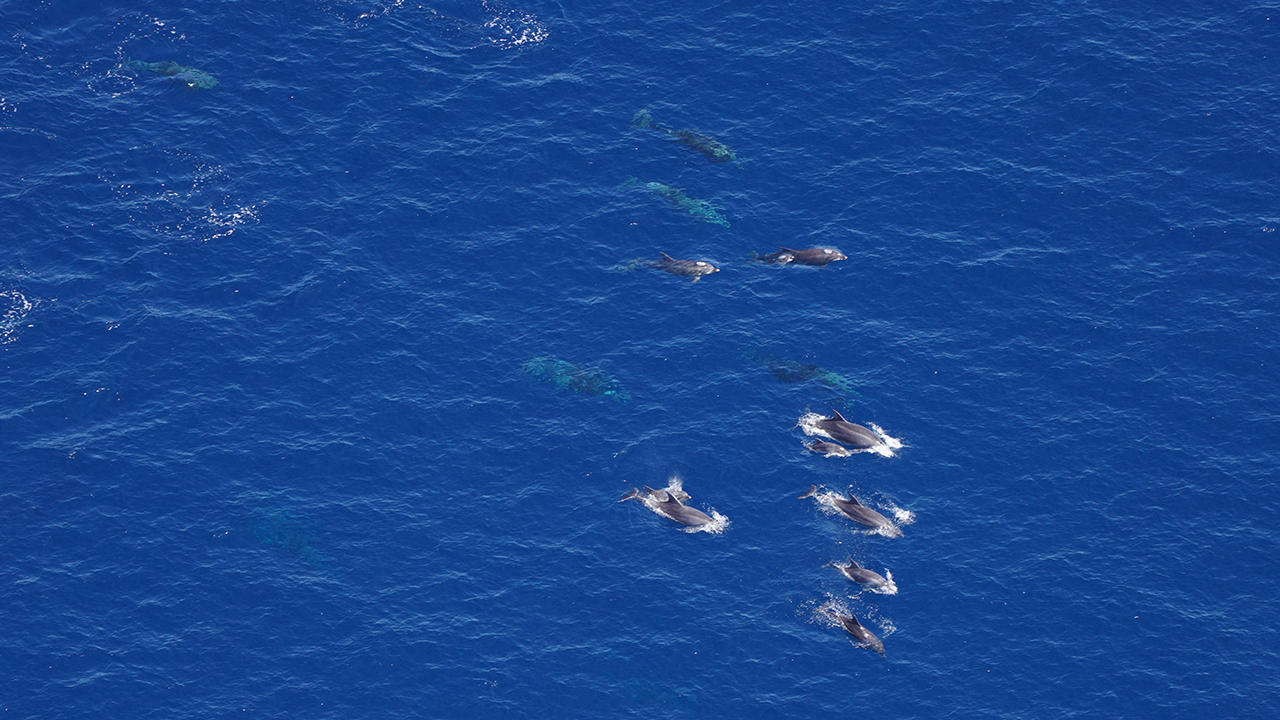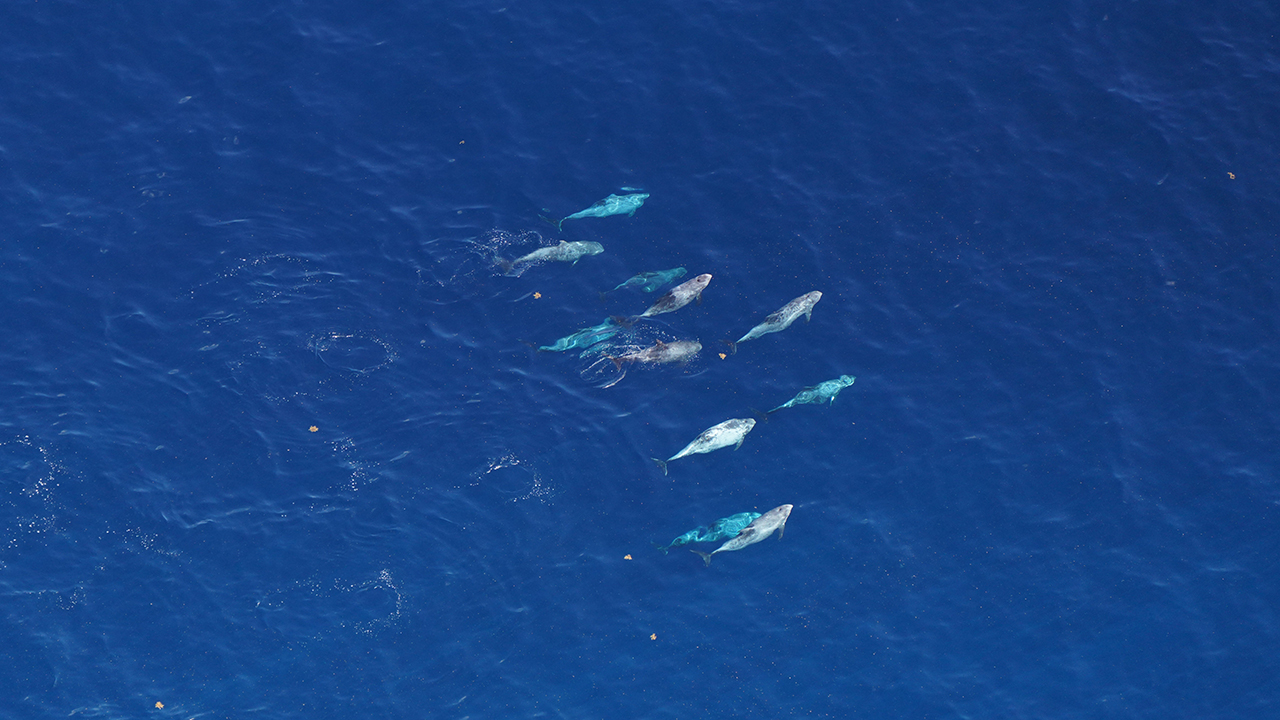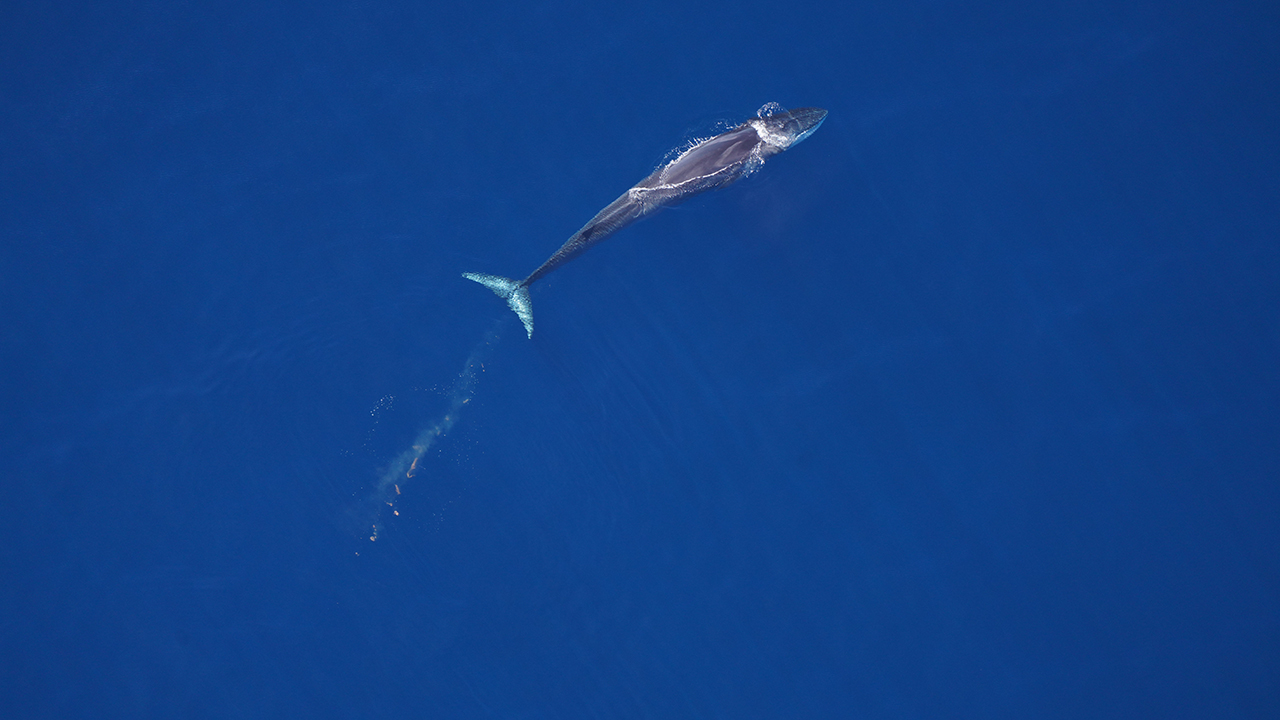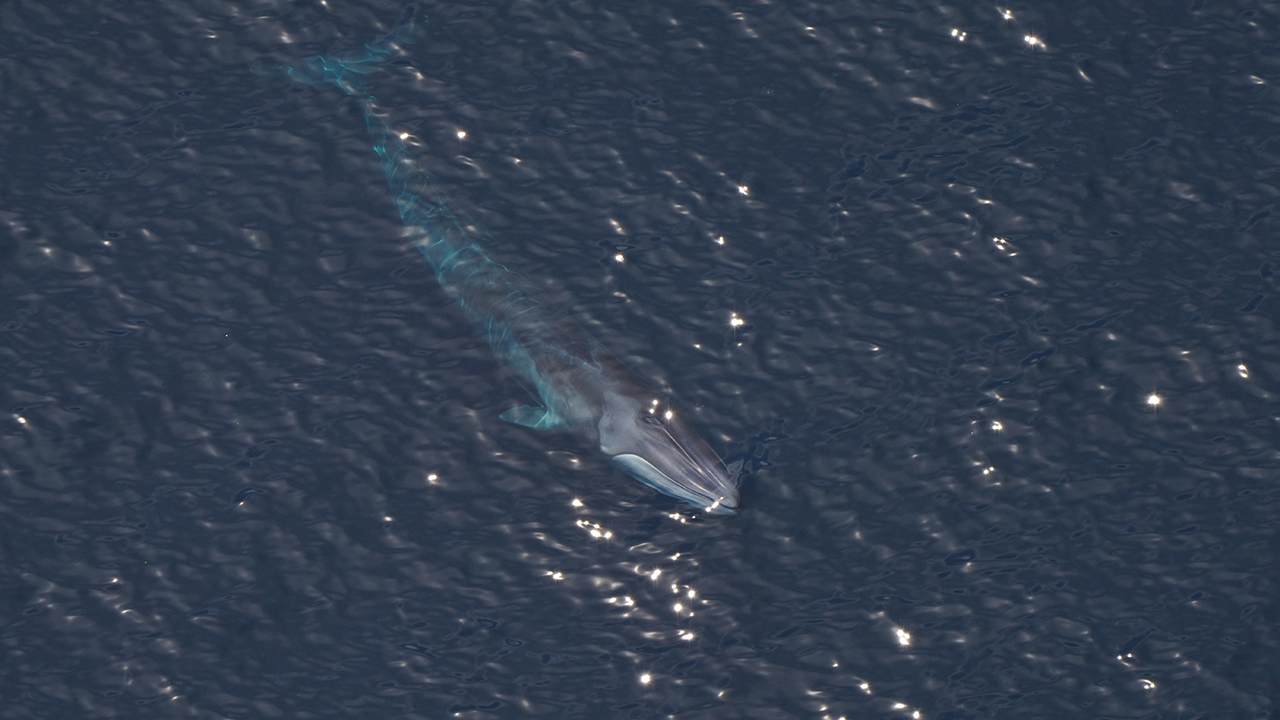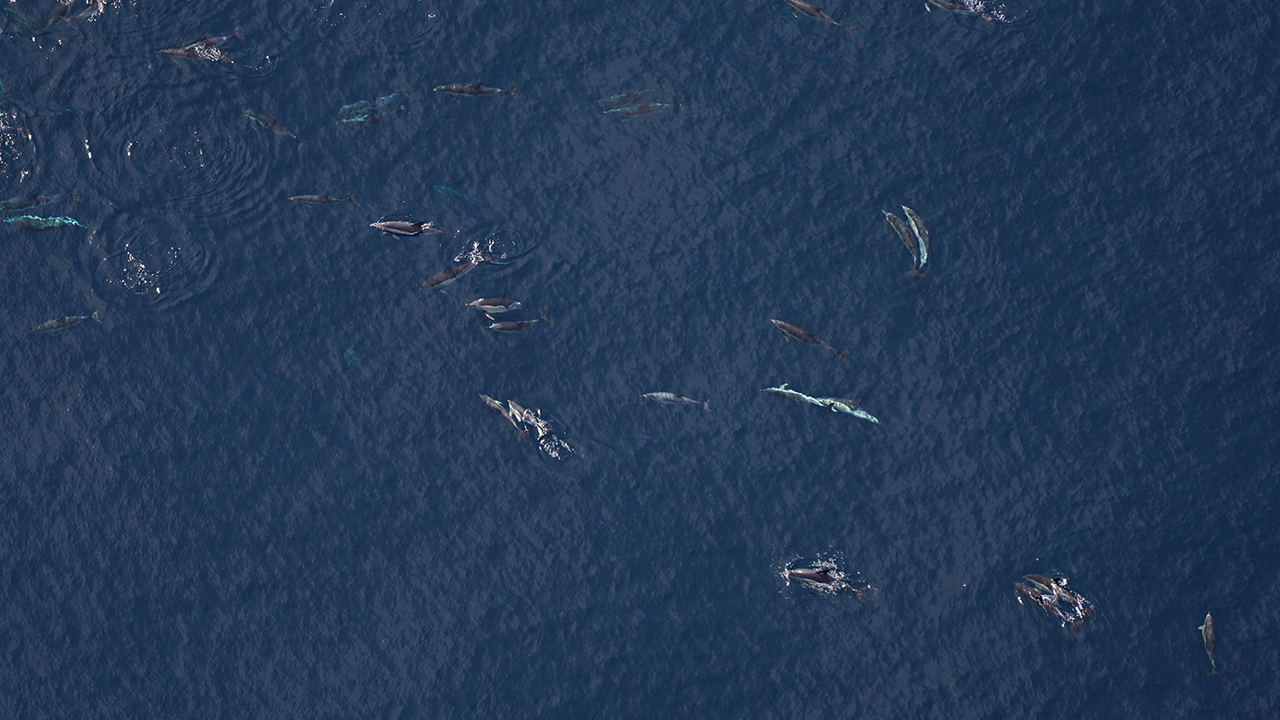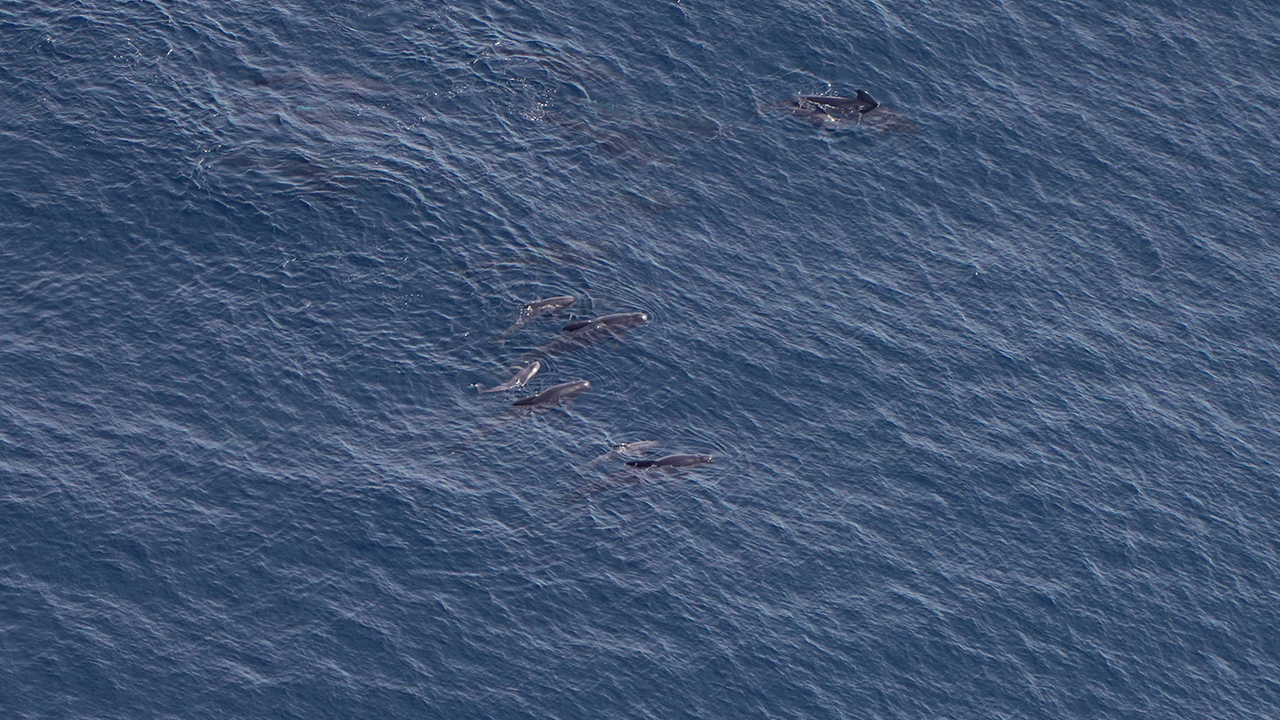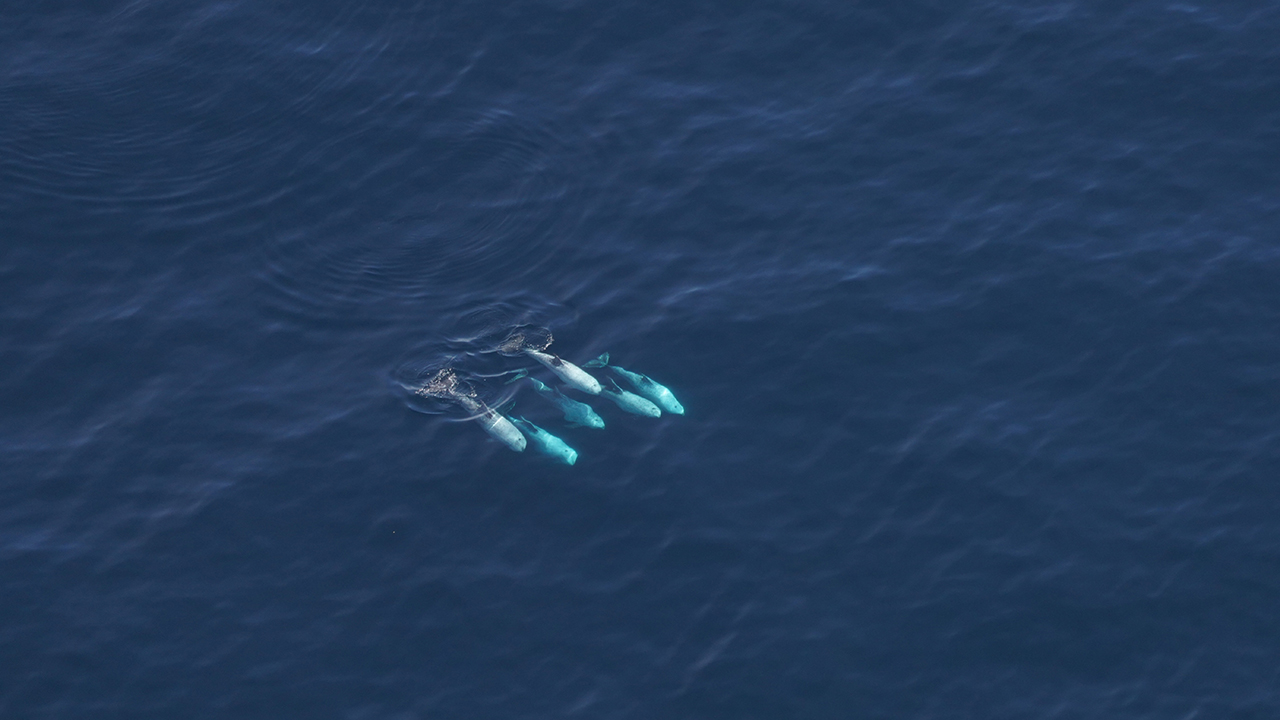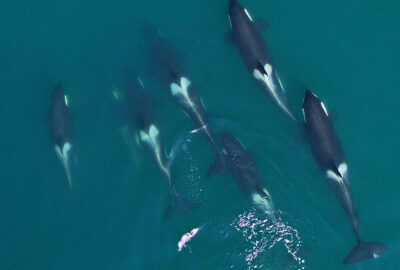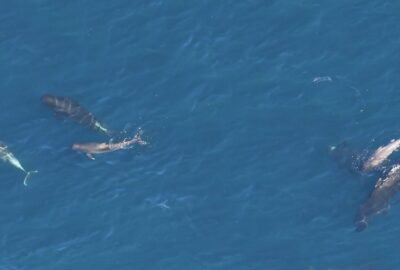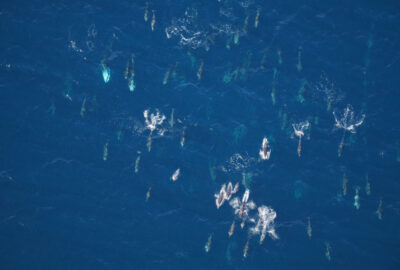Aerial Survey Sights Over the Monument Highlight Important Protected Habitat
Two summertime surveys spotlight the dynamic marine environment of the Northeast Canyons and Seamounts Marine National Monument.
By New England Aquarium on Monday, September 15, 2025

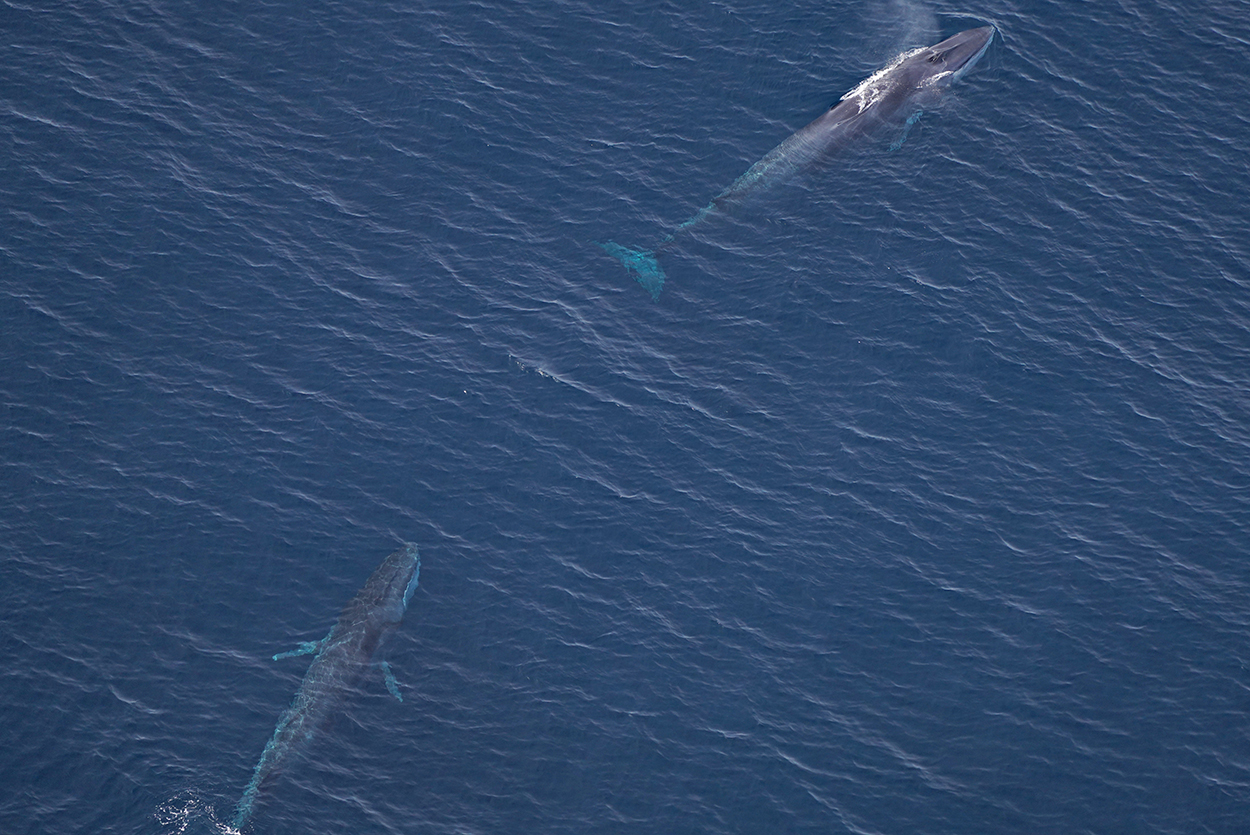
This summer, the aerial survey team at our Anderson Cabot Center for Ocean Life flew two surveys over the Northeast Canyons and Seamounts Marine National Monument.
It’s a routine survey site for the team, and an important one. As the only US marine monument in the Atlantic Ocean, Northeast Canyons and Seamounts is home to a diverse array of marine animals, and the survey team often sees animals numbering in the hundreds during flights. Data collected from these flights, which occur quarterly, help inform continued protection and management of the monument.
Read on to see highlights from this year’s summer surveys!
July Monument survey
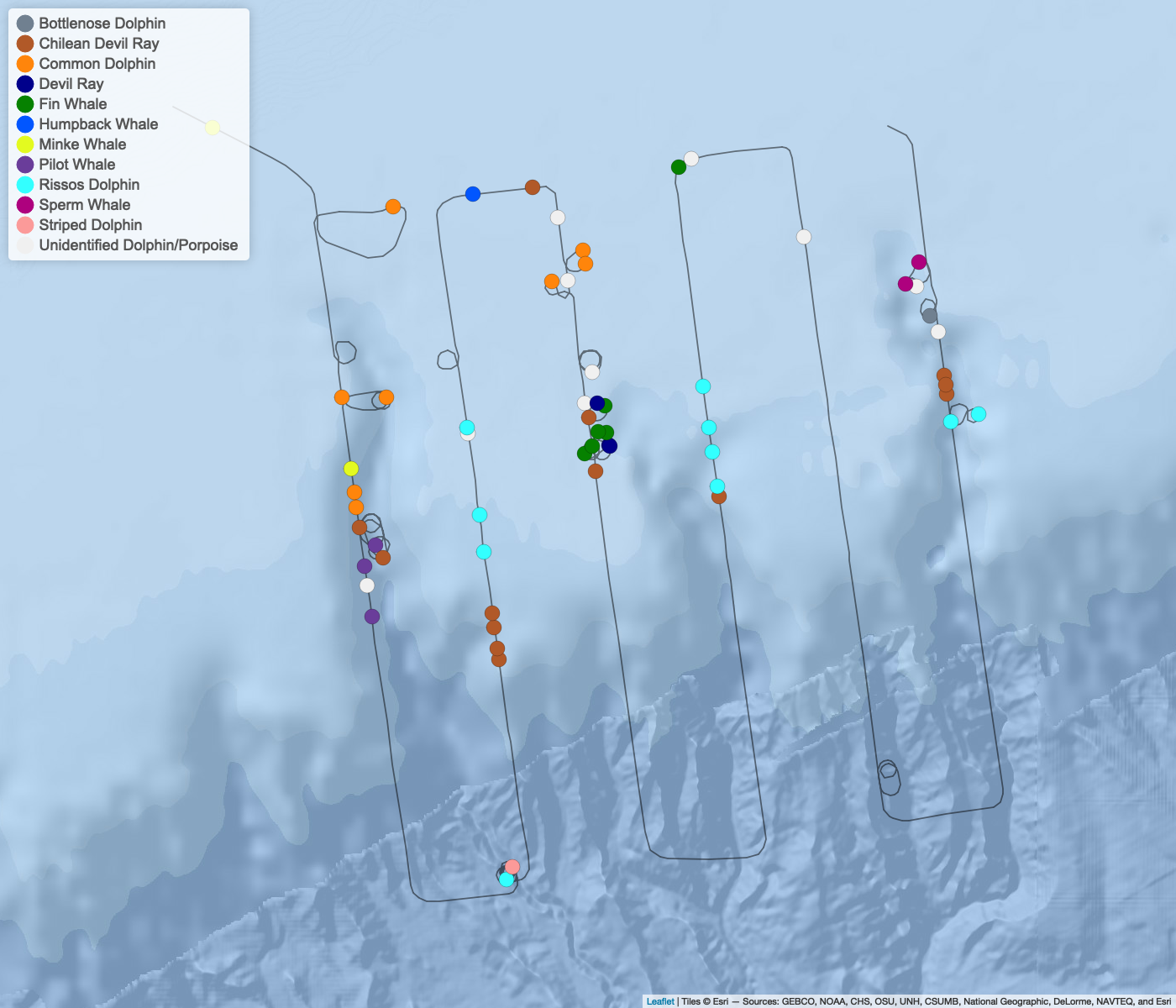
It was a clear and sunny day on July 24 when the team took off from New Bedford airport for the first Monument flight of the summer. Soon, they had spotted more than 1,000 marine animals from the survey plane. In total, the team sighted seven endangered fin whales, one endangered sperm whale, one humpback whale, two minke whales, 781 common dolphins, 108 Risso’s dolphins, 55 pilot whales, 30 bottlenose dolphins, 20 striped dolphins, and 22 devil rays.
A mother and calf pair
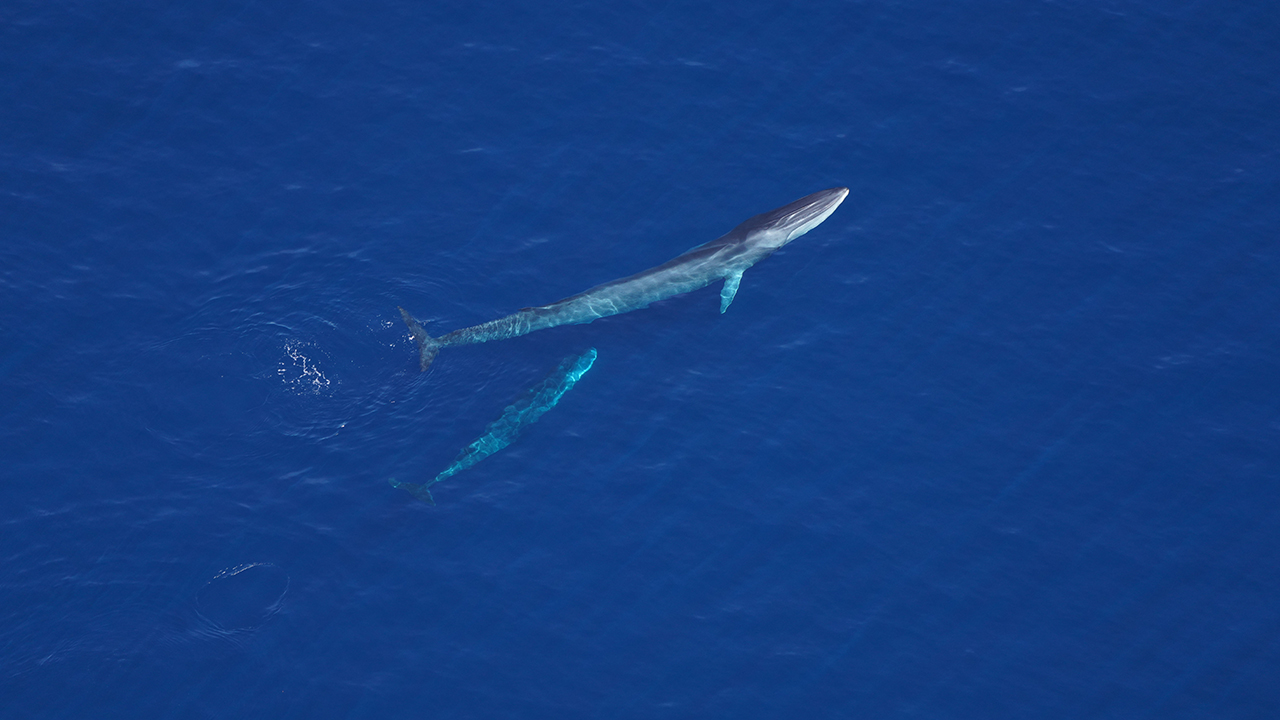
Fin whales are endangered, so seeing a mother and calf pair was especially exciting for the team. “Since fin whale populations are still recovering, it’s encouraging to see fin whale mothers bringing their calves to the Monument as they teach them about important feeding habitats,” said assistant research scientist Kate Laemmle, who was aboard the plane during the survey.
See more photo highlights from July below:
/
August Monument survey
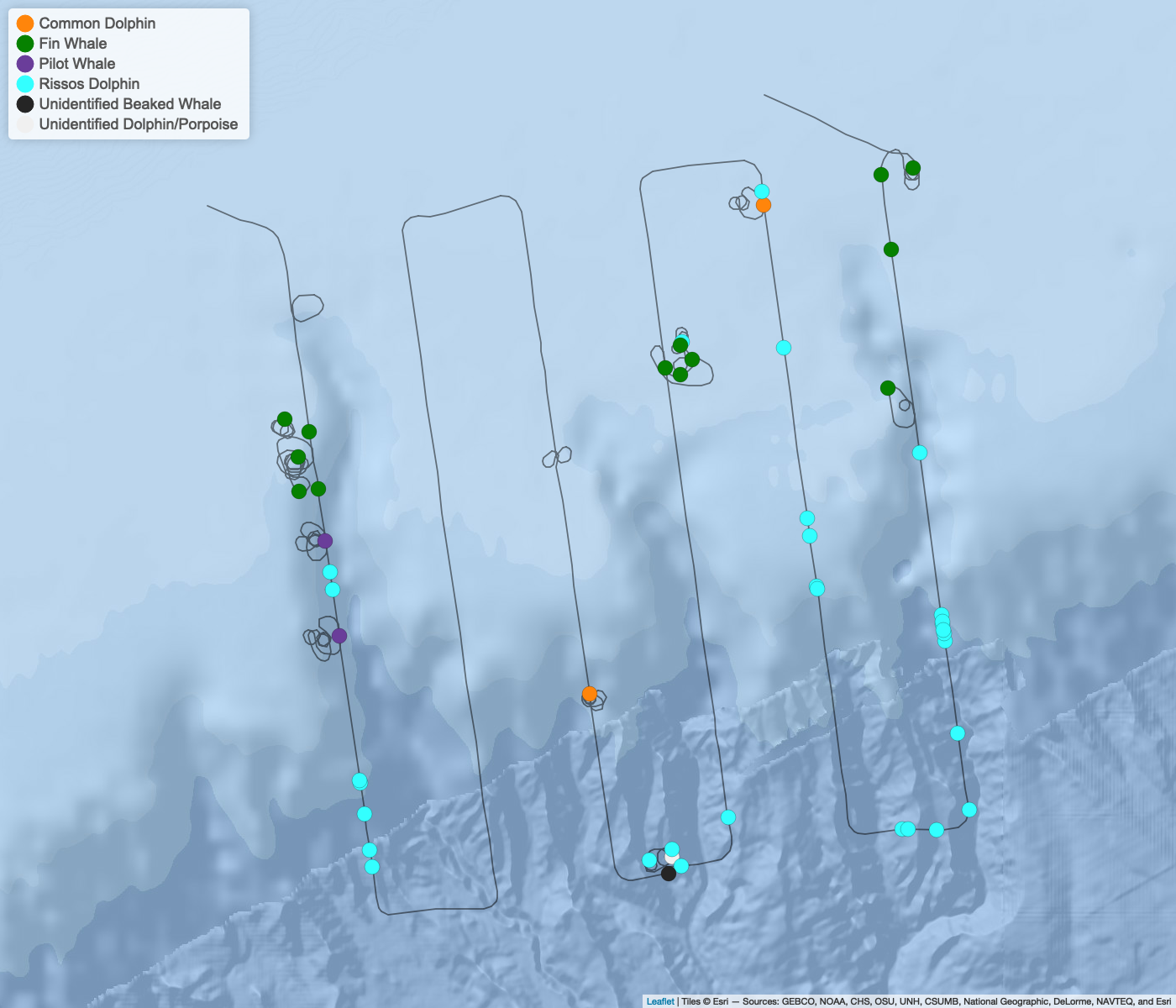
On August 31, the team took their second Monument flight of the summer. They spotted just over 500 individual animals, including 260 common dolphins, 175 Risso’s dolphins, 55 pilot whales, and 16 fin whales.
The wide array of animals seen on each flight highlights a unique aspect of the Monument as a gathering place for many different animals. “On these flights, we see animals that rely on different parts of the food chain,” said Orla O’Brien, research scientist and survey coordinator for the aerial survey team. “We see whales that eat schooling fish; dolphins that rely primarily on squid; and fishlike rays, basking sharks, and whale sharks that eat plankton,” Orla said. “Because all these different types of food can be found in the Monument, it attracts diverse assemblages of animals.”
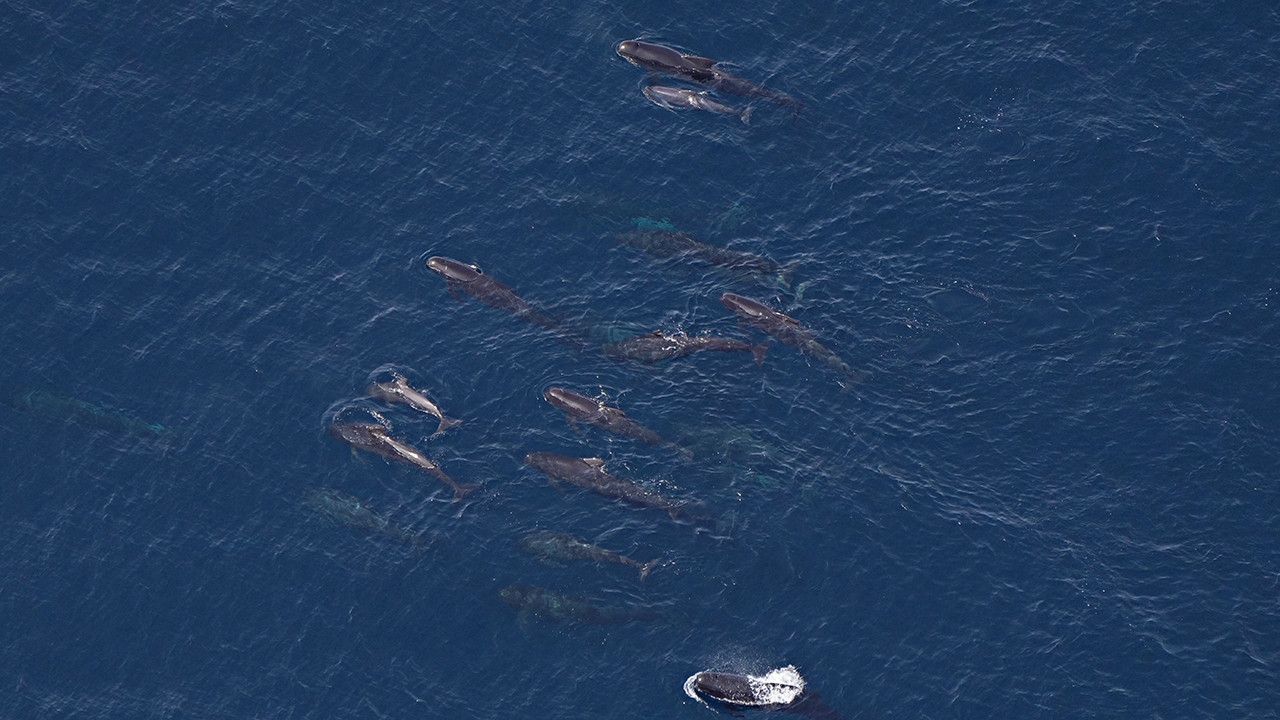
Orla also noted the differences in the types of animals seen in each of the flights. While there were more large whales spotted in August, they saw more rays and dolphins in July. “That just shows that the Monument is a really dynamic place,” Orla said. “Conditions are always changing and bringing in new types of animals.”
See more photo highlights from August below:
/
Surveys funded by the US Fish & Wildlife Service

